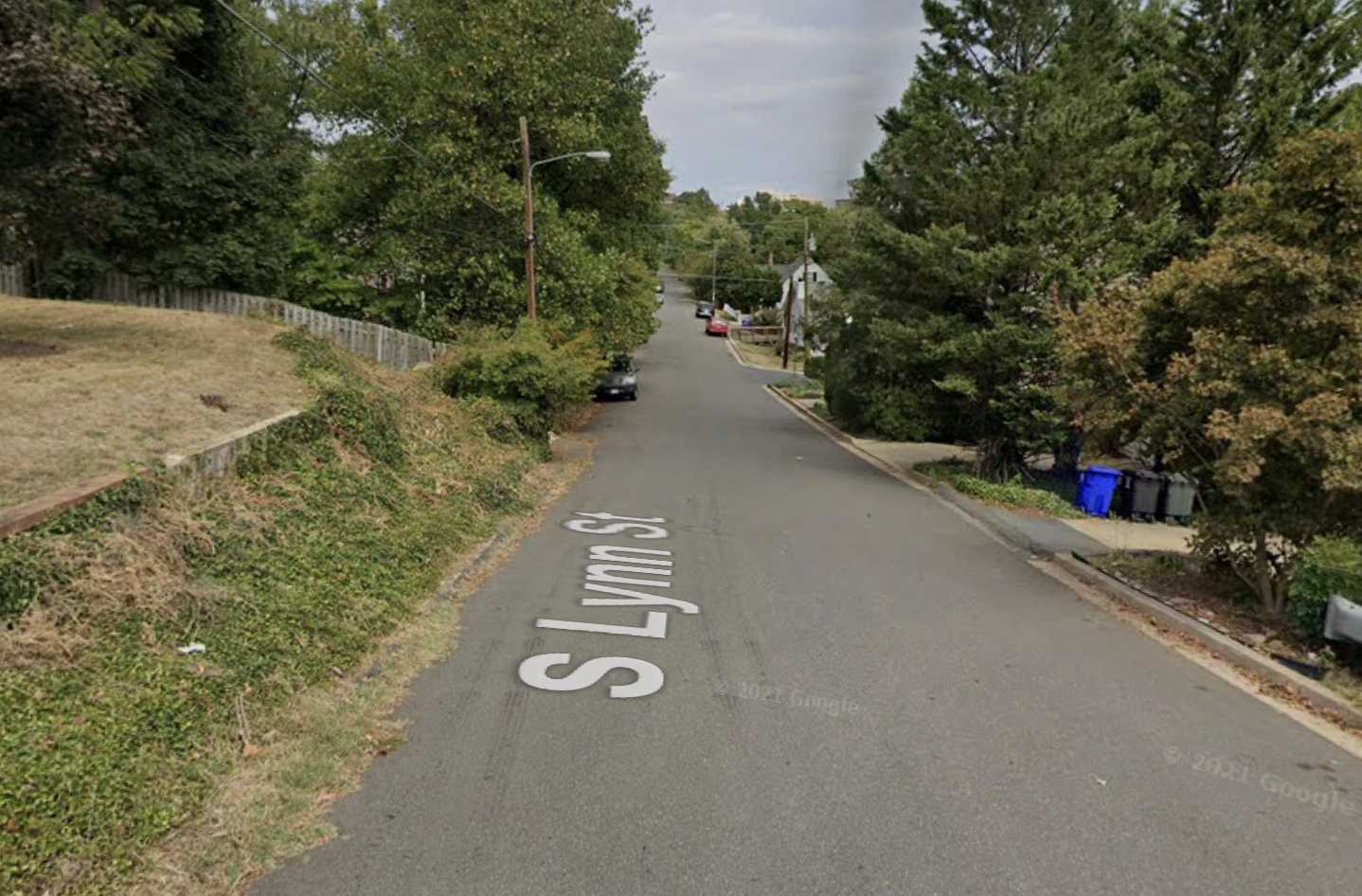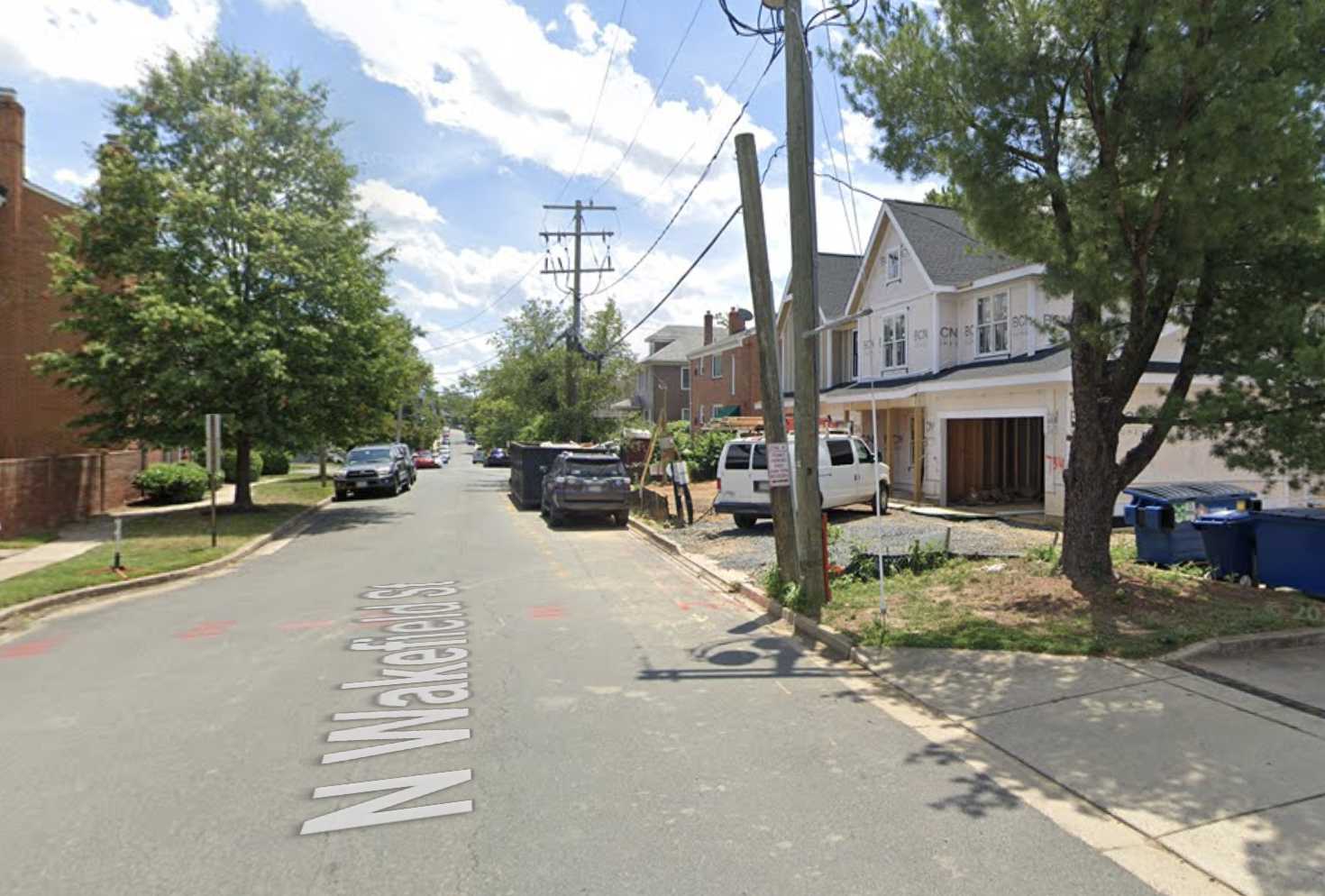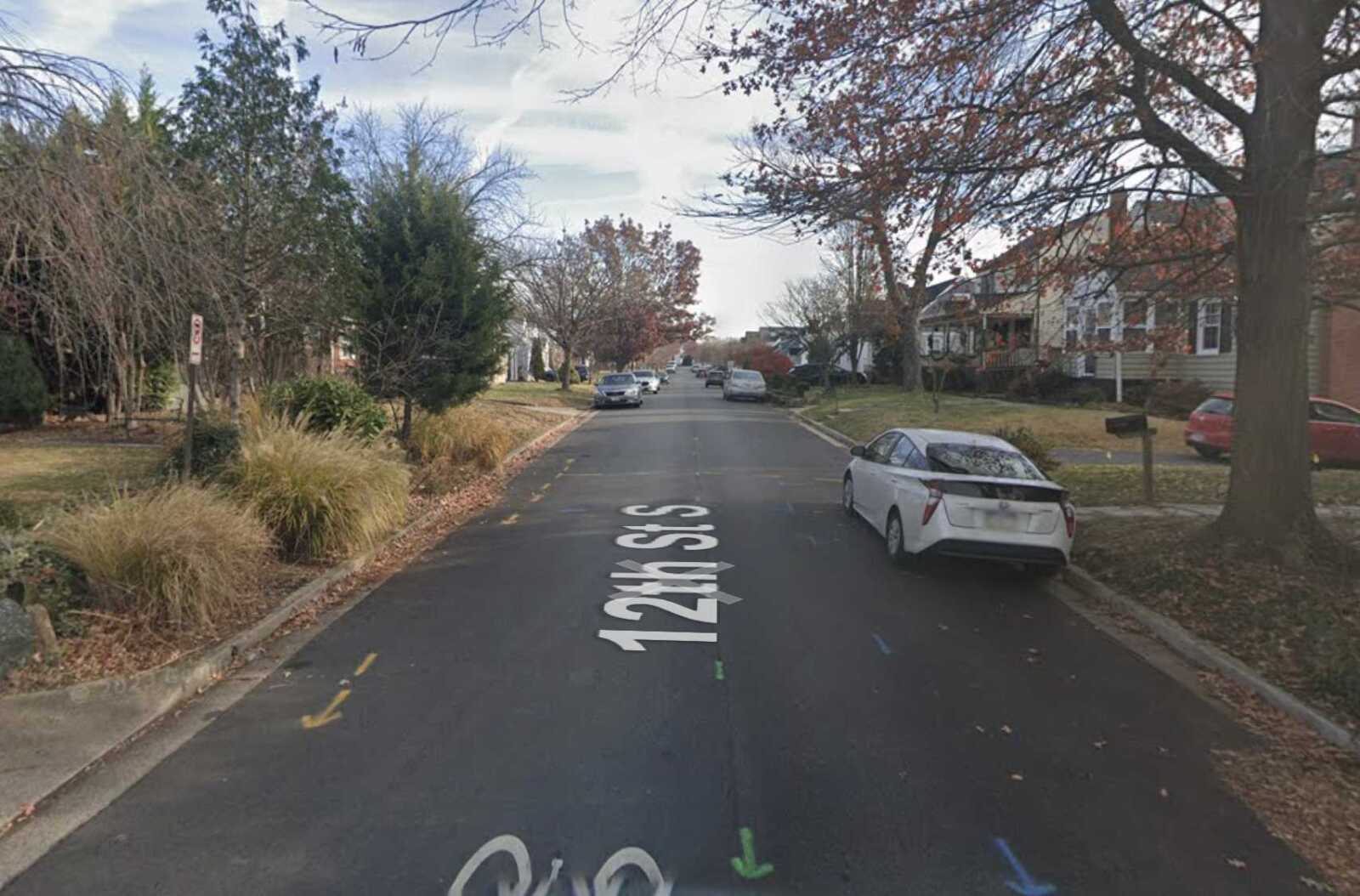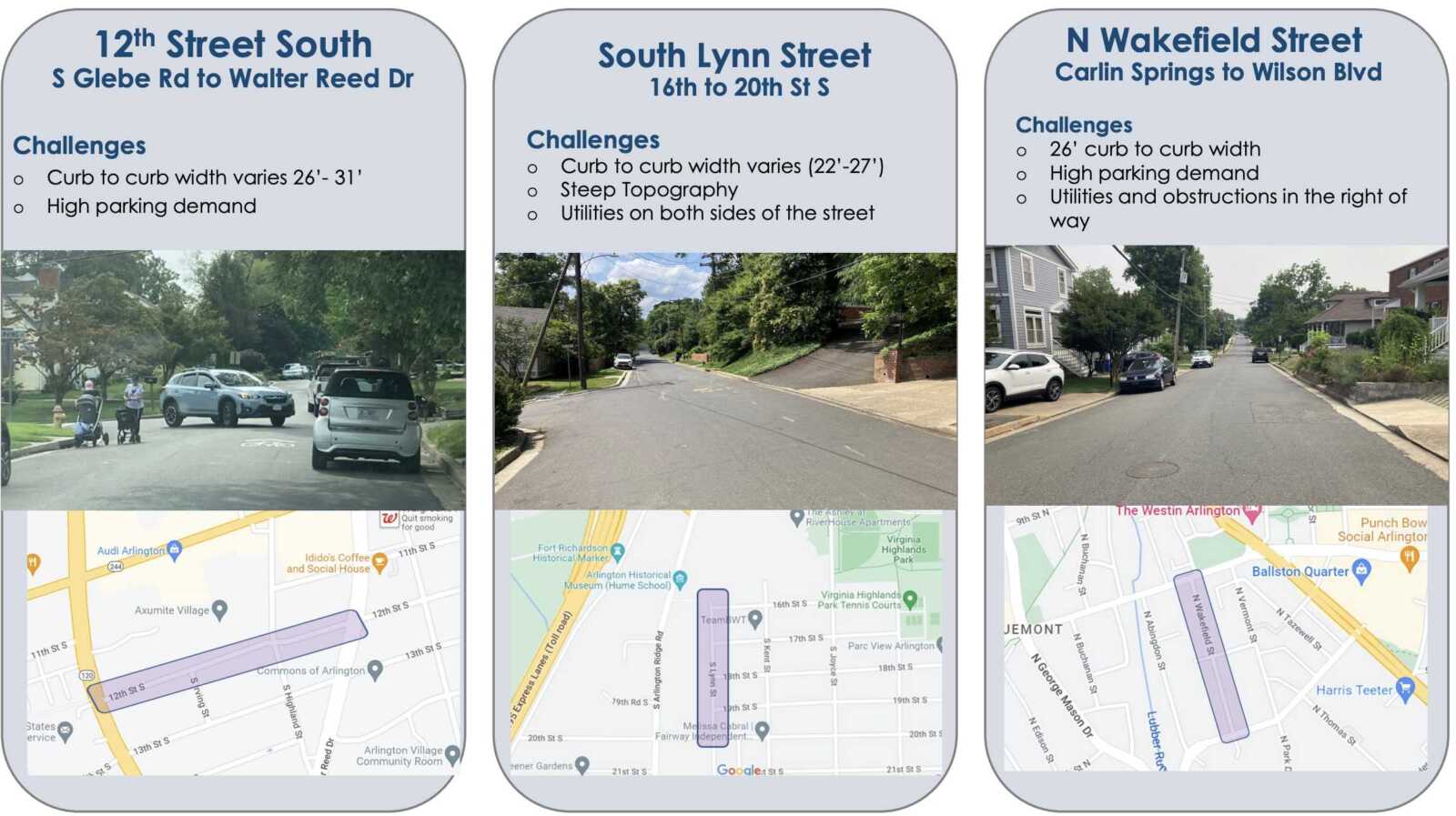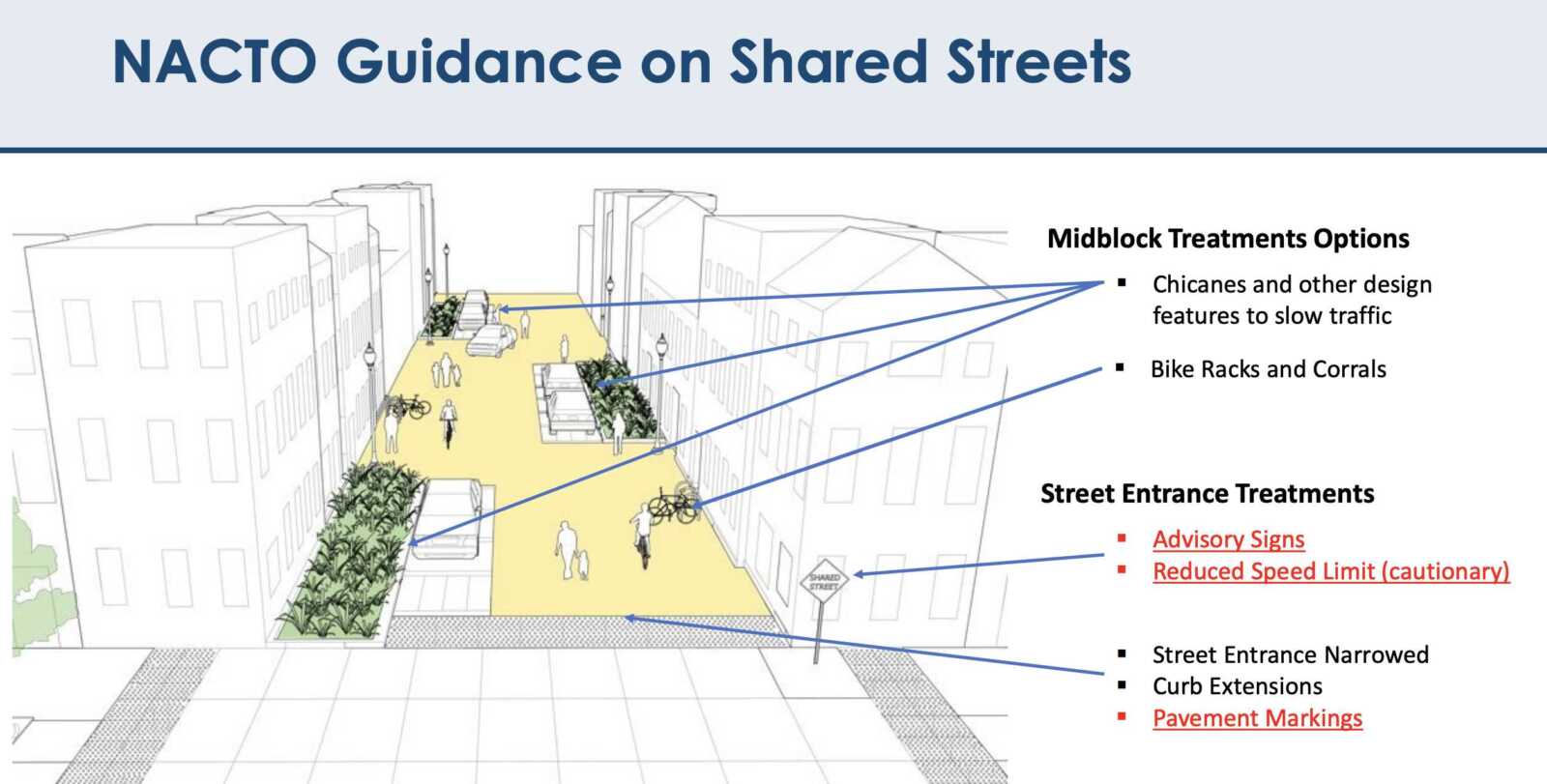Sometime next year, three residential streets in Arlington without sidewalks could get upgrades to allow for safer pedestrian and cyclist use.
To help address demonstrated safety and access issues on S. Lynn Street, N. Wakefield Street and 12th Street S., Arlington County’s Neighborhood Complete Streets Program is considering piloting “shared streets.”
On these streets, the county would slow down traffic and give cyclists and pedestrians more space through signs, barriers and other features, rather than building a sidewalk.
County staff picked these streets because they have incomplete sidewalks and characteristics “that make adding a sidewalk prohibitively difficult,” says Neighborhood Complete Streets Program Manager Michelle Stafford.
These characteristics include limited public right-of-way, difficult terrain and high parking demand. The streets also ranked above other streets nominated for the pilot program because of their crash histories as well as their proximity to schools, commercial corridors and transit.
“People currently drive, bike and walk in the street in these locations, but we can add features to the street to make that shared street conditions safer and more comfortable for all,” Stafford said in a recent presentation.
The identified streets in the Arlington Ridge, Douglas Park and Bluemont neighborhoods, and the challenges they pose for adding sidewalks, are as follows:
Shared streets can surmount these challenges, according to pilot project manager Brian Shelton.
“Shared streets can meet the desires of adjacent residents and function foremost as a public space for recreation, socializing and leisure,” Shelton said. “Many streets in Arlington already function as a shared street, however, we are missing some of the treatments which would enhance pedestrian comfort on these roadways.”
Shelton said staff have looked at recommended shared street tools from the National Association of City Transportation Officials, or NATCO, and opted to pursue a handful of strategies that make use of temporary materials and do not require significant construction.
These include midblock treatment options, such as chicanes — which narrow the road such that drivers are forced to slow down — and street entrance changes, including curb extensions.
Entrances to shared streets also typically have advisory signs and pavement markings to “eliminate the confusion of how the street is intended to be used,” Shelton said.
This fall, the county solicited feedback from residents on how the projects might change how they feel travelling these roads. This input will be used to refine designs, which are set to be finalized for funding hearings in early spring of next year.
Later this coming spring, the county expects to start implementing these shared streets. County staff will monitor these streets to ensure each corridor is functioning as intended, per the county website.


